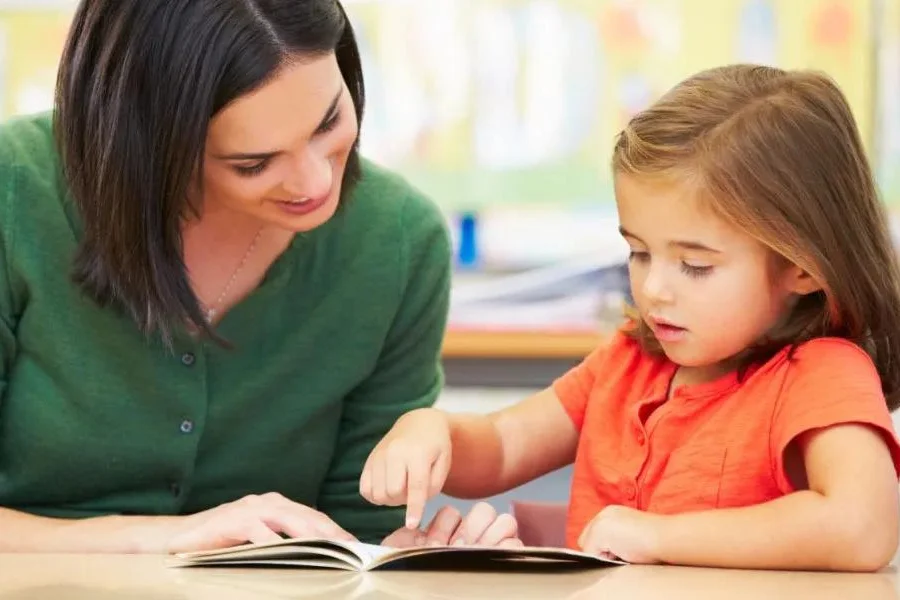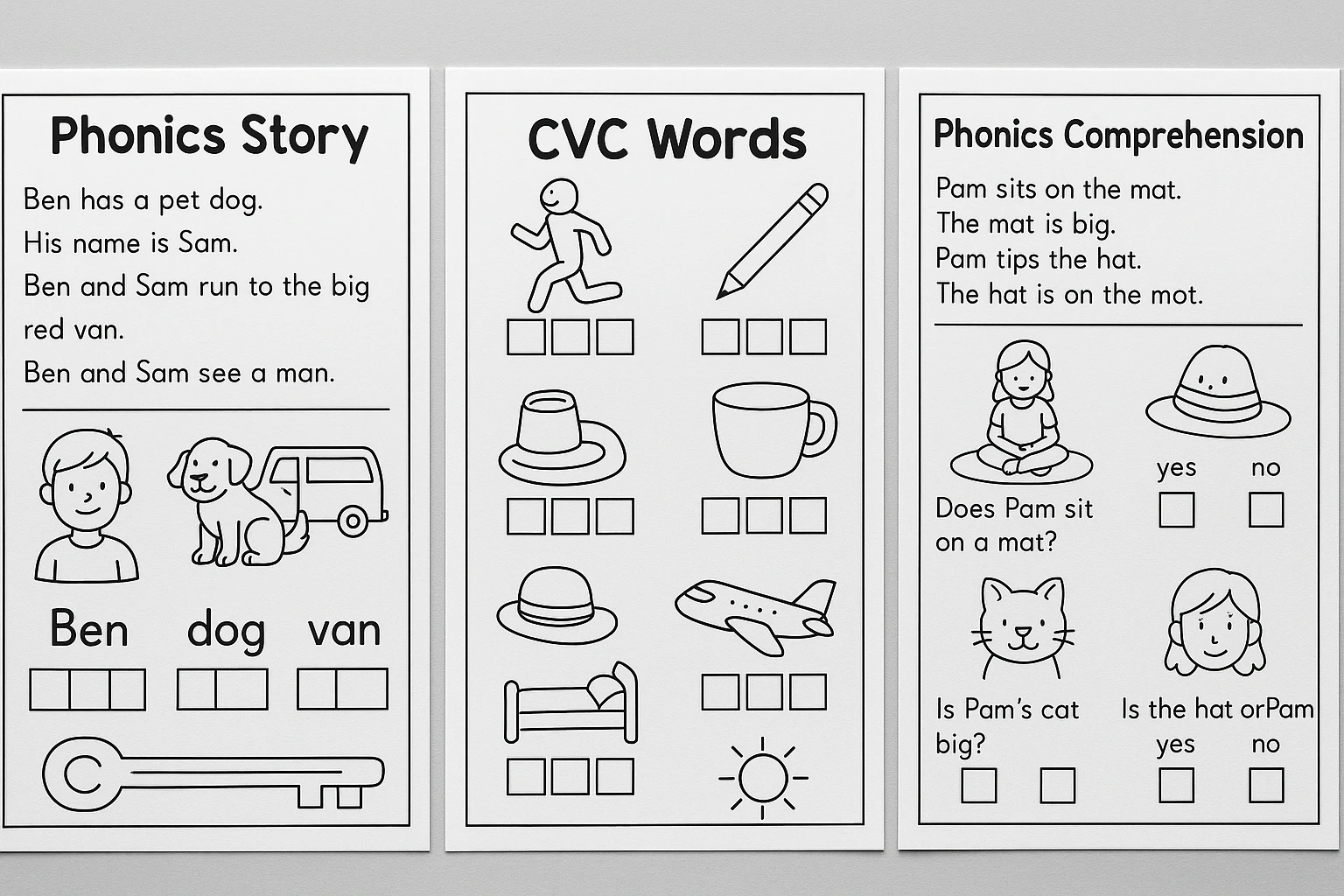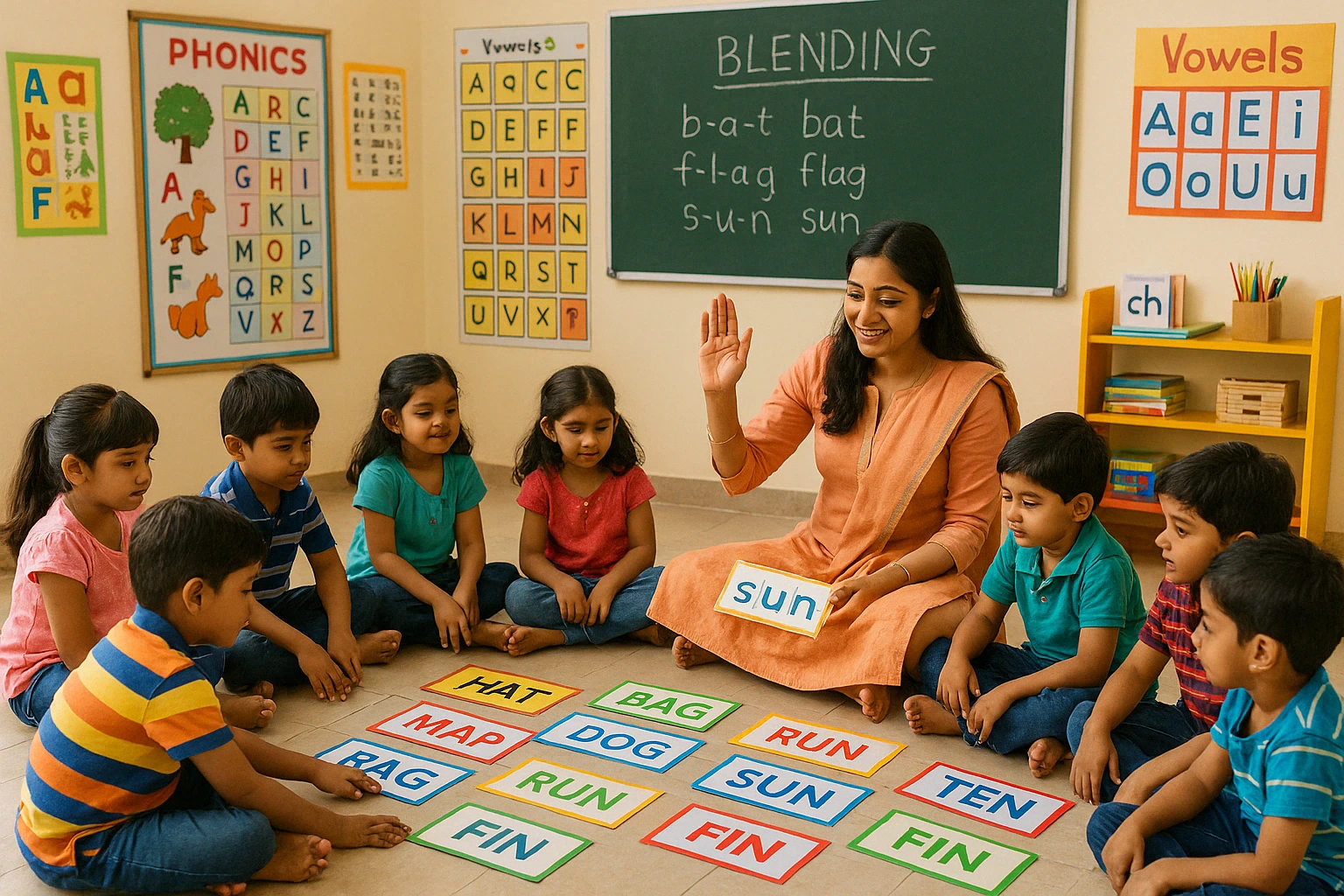How do you Teach Phonics Reading for Kindergarten?
How do you Teach Phonics Reading for Kindergarten?
Phonics is a teaching method that guides children in reading words by showing them how letters and sounds come together to form words. Phonics Reading for Kindergarten focuses on building the association between articulated sounds and written letters. At this phase, young learners begin to comprehend that words are comprised of sounds, which helps them read with confidence. It lays a robust foundation for prospective reading success.
Table of Content
Steps to Teach Phonics Reading
Phonics Reading for Kindergarten builds a robust reading foundation by advancing through distinct learning stages. Each stage acquaints children with key phonics concepts that strengthen their letter-sound understanding.
Here are detailed Steps to Teach Phonics Reading for Kindergarten:
Begin with Simple Consonant Sounds and Short Vowels
The foremost step is familiarizing individual letter sounds. Begin with common consonants such as b, m, t, s, and p. Use pictorial aids, songs, and visuals to strengthen the relationship between the letter and its sound. Along with consonants, introduce short vowel sounds like a, e, i, o, and u. These primary sounds help children identify letters phonetically.
Introduce Blending with Simple Three-Letter Words (CVC Words)
Once children recognize individual letter sounds, begin blending. Using a consonant vowel-consonant blending pattern to form simple three-letter CVC words can be helpful. Use phoneme boxes or finger tapping to assist learners sound out and blend the words. This stage is essential in Phonics Reading for Kindergarten as it teaches how to form word sounds.
Progress to Complex Consonant Combinations
After grasping simple blends, move to more intricate consonant combinations. Teach beginning blends such as bl-, st-, tr-, and gr-, and terminating blends like -nd, -mp, -st, and -ck. These help children comprehend that some sounds are comprised of two or more letters. Practice with words like flag, jump, trap, duck, etc. Gradually build vocabulary with such combinations to strengthen fluency in Phonics Reading.
Teach Vowel Teams and Common Vowel Combinations
The next step in Phonics Reading for child is vowel teams—two vowels working together to make one sound. Introduce patterns such as:
- ea as in beach
- oo as in book or moon
- ai as in rain
- oa as in boat
Make sure to explain that vowel teams don’t always follow the “first vowel says its name” rule. Use word lists and stories with repeated patterns for practice.
Explain Key Phonics Rules
Teaching rules help students decode unfamiliar words.
Some helpful rules include:
- The silent e rule: A final e at the end of a word usually makes the vowel say its name (cap becomes cape).
- The r-controlled vowels: When a vowel is followed by r, it modifies the sound (as in car, her, and bird).
- The double consonant rule: When a single consonant follows a short vowel, the consonant is doubled before adding a suffix (as in fit-fitting).
Phonics Reading for Kindergarten becomes easy by mastering these rules through a Phonics Teacher Training Course as it supports confident decoding and reading fluency.
With consistent practice and patient instruction, children can make steady progress. The step-by-step approach ensures that Phonics becomes a strong and engaging start to their literacy journey.
Click Here, for downloading the brochure of Phonics Course!
For the details of Phonics Course, Call or Whatsapp on +918104606573 / +919869546913.

Source: careernaka
How to Make Reading Fun?
Creating a cheerful and engrossing reading atmosphere is essential, especially when building early literacy through Phonics Reading for Kindergarten. Making reading fun helps children reach out to books with fun, not pressure.
Here are some simple and effective ways to Make Reading Fun and spark interest in young readers:
Pick the Right Books
Pick the Right Books that correspond to your child’s reading understanding. For Phonics, select books with repetitive sounds, rhyme patterns, and simple language. Books with large print and engaging pictures can also hold their attention better.
Read Aloud
Reading audibly enhances articulation. It supports Phonics by modeling how sounds connect to words.
Act Out the Story
Turn storytime into a mini-performance. Act out scenes with gestures, props, or even simple costumes. This physical activity adds energy to reading and helps children connect phonetic sounds with actions, playfully reinforcing Phonics.
Choose Books About Their Interests
When a child is interested in the topic—whether it’s animals, vehicles, or fairy tales—they’re more likely to remain attentive. Interest-based books form a natural stimulation to read, making it more effortless to use the principles of Phonics.
Create a Reading Space
Design a cozy and inviting corner dedicated to reading. Add pillows, blankets, and a small bookshelf. A quiet and special space gives children a sense of ownership and builds positive reading habits that support their progress in Phonics Reading for Kindergarten.
Make Connections between Books and Life
Talk about how the stories relate to everyday situations. For example, if a book talks about the zoo, discuss your last visit there. Making real-world connections deepens comprehension and gives purpose to the skills learned through Phonics.
Let Your Child Choose
Give your child the freedom to pick books from a pre-selected group that suits their phonics level. Having a choice boosts confidence and interest. When children choose what they read, they are more engaged, which helps strengthen Phonics.
Phonics Teacher Training Course trains educators to incorporate these fun strategies to build a positive reading experience and strengthen the foundation laid by Phonics. By making reading enjoyable, children stay motivated and grow into confident, capable readers.
Click Here, for downloading the brochure of Phonics Course!
For the details of Phonics Course, Call or Whatsapp on +918104606573 / +919869546913.
Examples of Kindergarten Reading Worksheet
Phonics Reading for Kindergarten integrates practical worksheets that help children associate sounds with letters, blend them into words, and develop early reading confidence. These worksheets offer structured practice to strengthen skills taught in the class.
Below are three effective Examples of Kindergarten Reading Worksheet used in Phonics:

By using these Reading Worksheets, Phonics becomes interesting and helps children develop robust early literacy proficiency.
Teaching Phonics Reading for Kindergarten requires the right approaches, patience, and a deep understanding of how young children comprehend sounds and letters. Expert training is the key to effectively guiding early learners. If you’re passionate about building a strong reading basis, enroll now in the Phonics Teacher Training Course by Vidhyanidhi Education Society (Govt. Regd.). This Phonics Teacher Training Course equips educators with valuable tools and established methods to Teach Phonics Reading for Kindergarten confidently and effectively. Build your skills and make a lasting impact on young readers.
Start your journey as a phonics expert with Vidhyanidhi’s trusted Phonics Course!
Click Here, for downloading the brochure of Phonics Course!
For the details of Phonics Course, Call or Whatsapp on +918104606573 / +919869546913.
FAQs
How Often should Phonics Reading be Practiced at Home?
Phonics Reading for Kindergarten should be practiced every day for 10–15 minutes to build consistency, boost sound recognition, and support classroom learning.
At what Age should Children Start Phonics Reading?
Children can begin Phonics Reading around age 4, when they start recognizing letters, and sounds, and showing interest in words and early reading activities.





